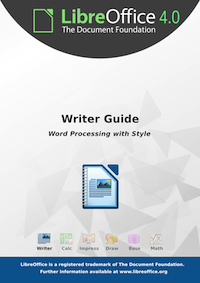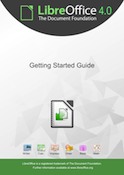 The Documentation Team published the LibreOffice 4.0 Impress Guide in July.
The Documentation Team published the LibreOffice 4.0 Impress Guide in July.
Free PDFs can be downloaded from The Document Foundation’s wiki.
Printed copies can be purchased here. (Published by Friends of OpenDocument Inc.)

Aug 08 2013
 The Documentation Team published the LibreOffice 4.0 Impress Guide in July.
The Documentation Team published the LibreOffice 4.0 Impress Guide in July.
Free PDFs can be downloaded from The Document Foundation’s wiki.
Printed copies can be purchased here. (Published by Friends of OpenDocument Inc.)
Jul 07 2013

 The LibreOffice Documentation Team has published two books: the LibreOffice 4.0 Math Guide and the LibreOffice 4.0 Base Handbook.
The LibreOffice Documentation Team has published two books: the LibreOffice 4.0 Math Guide and the LibreOffice 4.0 Base Handbook.
Free PDFs can be downloaded from The Document Foundation’s wiki.
Printed copies can be purchased here. (Published by Friends of OpenDocument Inc.)
Note: The Base 4.0 Handbook is identical to the Base 3.6 Handbook, except for the cover, the ISBN, and the title and copyright pages. If you have the earlier version, you don’t need this one. The Math 4.0 Guide has new and revised material in it.
Jun 08 2013
The LibreOffice Documentation Team has published two new books this week. Free PDFs can be downloaded from The Document Foundation’s wiki.
 LibreOffice 4.0 Writer Guide. In addition to free PDFs (see first paragraph), you can purchase printed copies (published by Friends of OpenDocument Inc.) from here.
LibreOffice 4.0 Writer Guide. In addition to free PDFs (see first paragraph), you can purchase printed copies (published by Friends of OpenDocument Inc.) from here.
 LibreOffice 3.6 Base Handbook, translated from the German edition. In addition to free PDFs (see first paragraph), you can purchase printed copies (published by Friends of OpenDocument Inc.) from here.
LibreOffice 3.6 Base Handbook, translated from the German edition. In addition to free PDFs (see first paragraph), you can purchase printed copies (published by Friends of OpenDocument Inc.) from here.
Mar 17 2013
The Windows Secrets newsletter has an article by Fred Langa dated March 14, 2013, titled Two free, full-blown alternatives to MS Office that features LibreOffice and OpenOffice.
The article mentions several features that particularly appeal to users of older (pre-2007) versions of MS Office who have been reluctant to move to newer versions: unlike Office 2013, LibreOffice and OpenOffice “live and work entirely on your PC’s hard drive — there’s no prodding you toward cloud storage or app rental. Both suites use traditional toolbars (no Ribbon interface) and come with six business apps: word processor, spreadsheet, presentation creator, drawing/desktop-publishing tool, database manager, and mathematics tool…
“Although the two suites are similar, LibreOffice is a bit more evolved… For example, LibreOffice now supports more file formats than Open Office does…” (including opening, but not saving to, Microsoft Publisher files).
Lange says, “Is either of these open-source MS Office substitutes right for you? If your office-suite needs are relatively modest, the answer is most likely yes. On the other hand, if you’re regularly collaborating with businesses that use Office 2010 or 2013 and exact reproduction of spreadsheets, presentations, and text documents is essential, it’s safer to stick with Microsoft’s suite…
“I think LibreOffice is currently the better choice. It nicely does what I need done, quietly and without fanfare. It supports more file formats, including those used by the newest versions of Microsoft Office, and it has more developer momentum behind it. But that’s me; Open Office might work just as well or better for you…
“Bottom line: If you’re looking for an alternative to Microsoft Office that isn’t cloud-oriented, that uses traditional toolbars, and that’s totally free, you probably won’t go wrong with LibreOffice or Open Office!”
Mar 10 2013
 Free PDFs can be downloaded from the wiki.
Free PDFs can be downloaded from the wiki.
Printed copies are available for purchase from Lulu.com.